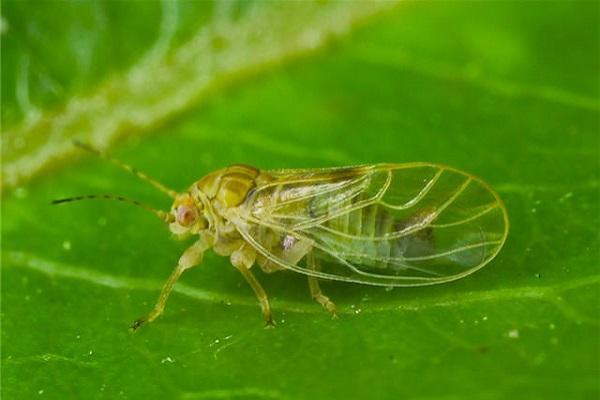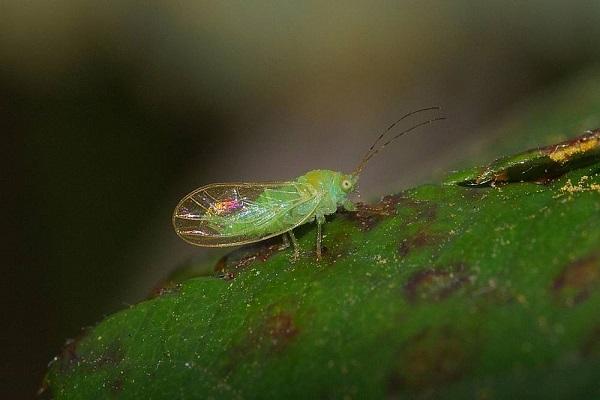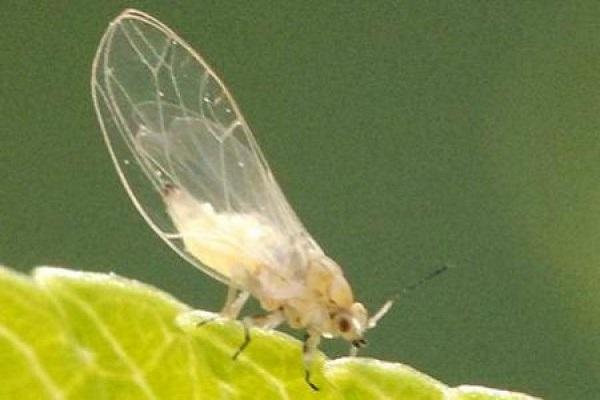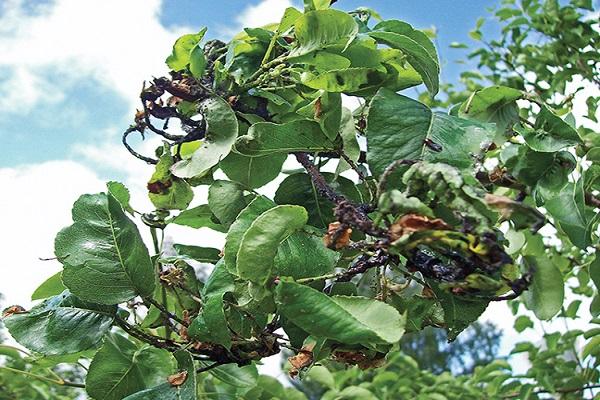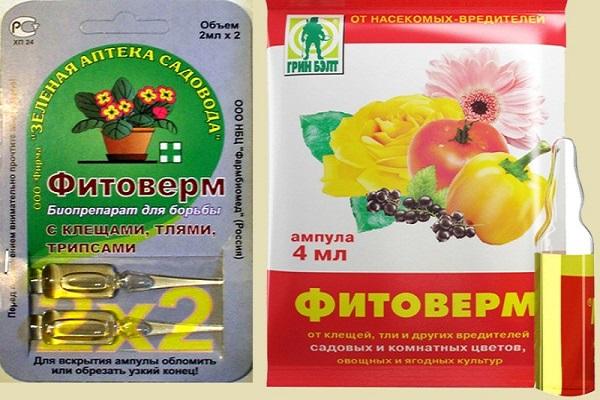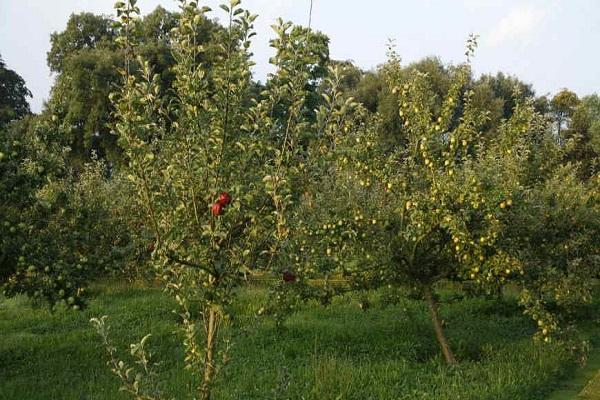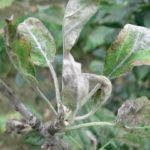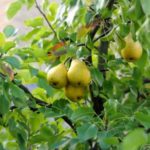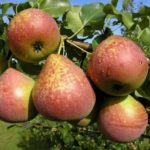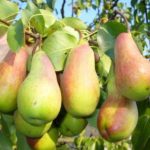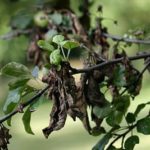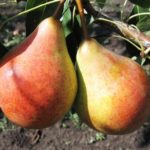Pearworm is often found on pear trees, so you should know the measures to combat the pest. You can recognize the appearance of an insect by certain signs. It feeds on the sap of the plant, as a result it dries out and dies. In the fight against the copperhead, folk recipes, as well as biological and chemical preparations, are used. Preventive measures will help prevent a repeat attack by the pest.
Description of the pest
The honey psyllid, or pear psyllid, is a small insect that can jump and fly well.It appears immediately after the snow melts. The insect has developed wings. In winter cold it hides under tree bark and fallen leaves.
- The body of an adult honeydew (imago) in summer is colored red-orange or green-brown with longitudinal light stripes on the abdomen.
- Transparent wings with dark orange veins fold along the body. Closer to winter, the body becomes black.
- The head has a triangular shape. There are two large and three small eyes on it, and there is also a proboscis, with the help of which the insect draws in juice from the green part of the plant.
- The length of an adult insect is up to 2.8 mm.
- The insect quickly jumps or flies from one tree to another.
- Each female is capable of laying from 450 to 1100 eggs. The eggs are oval in shape, 0.4 mm long. At first they are white, then become orange.
The larva goes through several stages in its development. The psyllid larva of the last stage of development (nymph) poses great harm to fruit trees.
Insects suck the juices from the plant and contribute to the development of fungal disease. Therefore, it is so important to identify the problem in time and begin the fight with proven and effective drugs.
Development cycle
For wintering, adult individuals (their body is dark in color) go into cracks under the bark or under fallen leaves. As soon as the air temperature after winter reaches -1-2 degrees (approximately the last days of March), insects begin their active life activities.
When the air warms to +5 degrees, honeydews begin to mate. Males die immediately after mating, while females live up to 46 days. The first laying of eggs at the base of the buds occurs at a temperature of +10 degrees.
The warmer the air, the faster the larva goes through all stages of its development.At a temperature of +10 degrees, nymphs begin to appear after three weeks, and at a temperature of +23 degrees - after a week.
Stages of larval development:
- The first phase is distinguished by the fact that the insect has a body up to 0.56 mm long, dark orange in color with dark stripes on the back.
- The size of the body reaches 0.73 mm, the color becomes lighter.
- The insect grows up to 1 mm, the body becomes light gray.
- The nymph grows up to 1.37 mm, the body color is greenish-yellow, and the outlines of the wings become noticeable.
- Similarities with adult individuals appear. The size increases to 2 mm, the body color becomes brownish-greenish.
Why is an insect dangerous?
Reproduction of the copperhead most often occurs only on young, well-fruiting pears. Nymphs suck juice from leaves, buds, stalks and fruits. Excess juice drunk is released in the form of a sticky composition.
The affected areas become infected with fungal diseases, the tree's immunity decreases, the buds and leaves dry out and fall off. The fruits that have managed to form grow small in size, have a deformed shape and a bitter taste.
Causes
There are several unfavorable factors that contribute to the appearance of copperhead on fruit trees:
- reproduction is favored by humid, warm weather;
- Pear varieties with late fruit ripening are the most damaged;
- The dense crown and thick, wrinkled bark on the trunk and branches provoke the appearance of pests;
- the presence of a large amount of weeds around the trees;
- no pruning;
- poor preparation of pears for winter.
Following the rules of care and preventive treatment of all fruit trees in the garden with special compounds will help reduce the risk of psyllids.
Signs of defeat
It is not difficult to recognize the appearance of the pear worm:
- young leaves, ovaries and buds die;
- a sticky, dirty gray coating appears on the greenery;
- the edges of the leaves turn black, begin to dry out, and curl;
- flower buds, leaves, fruits fall off prematurely;
- the fruits are covered with bloom, are small in size and have a deformed shape.
Methods of dealing with the copperhead
The difficulty in dealing with psyllid is that it begins to lay eggs early and quickly jumps from one plant to another. Chemical preparations are effective, but the treatment is also quite successfully carried out with folk formulations.
Application of insecticides
It’s easy to check if there is a psyllid on a tree. When the air temperature outside reaches +4 degrees, you need to lay a white cloth under the pear and lightly knock on the branches. If pests are present, they can be easily seen on a light-colored blanket:
- Before the buds open, the trees are treated with such preparations as “30 Plus”, “Commander”, “Profilaktin”, “Inta-vir”.
- After the end of the flowering period, spraying with preparations such as “Iskra” or “Agravertin” is carried out.
- During the growing season, it is recommended to treat with solutions based on products such as Fufanon, Aktara, Iskra M.
Spraying of trees should be carried out in the evening. The weather should be dry and windless. It is especially effective to carry out treatment after rain, when part of the sticky base is washed off with water.
When diluting the solution, be sure to follow the recommended proportions, which are indicated on the packaging of the selected product.
Biological agents
Biological products are toxic to insects, but do not pose a danger to people and animals.The most popular products include: “Lepidotsid”, “Bitoxibacillin”, “Fitoverm”.
Beneficial insects such as ladybugs or lacewings will help in pest control.
The best helpers in the fight against the copperhead are the predatory bugs Anthocoris nemoralis. They are sold in specialized stores in quantities of 200 pieces. The bug and the copperhead appear at the same time after winter.
Traditional treatment
Folk compositions are effective only at the early stage of the appearance of insects, when their number is not large and the damage is insignificant:
- After the end of the flowering period, the pears are fumigated with tobacco. Small piles of damp straw mixed with tobacco dust are laid out in the garden and set on fire. The smoke begins to poison the pests, and they fall to the ground.
- They use decoctions and infusions of dandelions and yarrow. An ash or soap solution is effective.
Preventive actions
To prevent the spread of psyllid, you should follow the rules of prevention:
- it is necessary to carry out preventive work in the autumn and spring;
- in the fall, it is imperative to clear the area of vegetation, fallen leaves, and branches;
- the tree trunk area should be dug up every autumn;
- Mineral supplements will help increase the plant’s immunity;
- the tree trunk is whitewashed;
- remove old, damaged bark and branches;
- It is recommended to attract beneficial insects to fruit trees: lacewings, ground beetles, ladybugs, spiders.
By providing fruit trees with proper care, you will be able to reduce the risk of pests and other problems.

